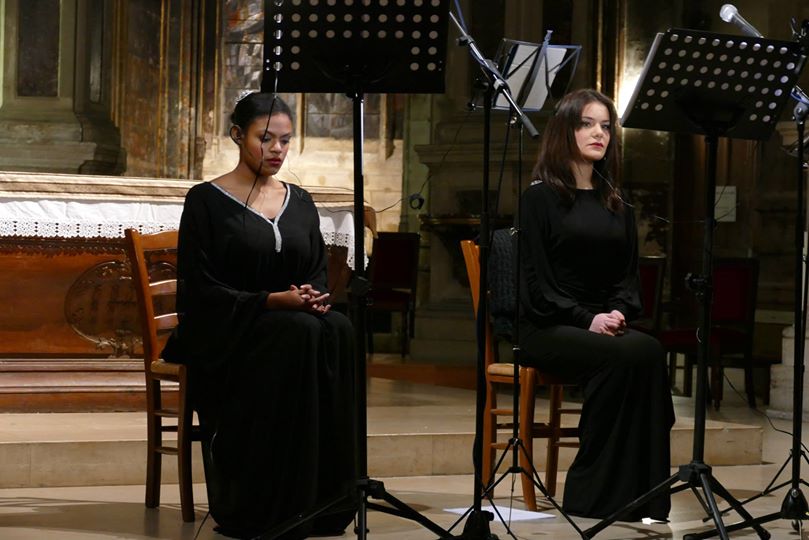Nox - 2003-2015
Cycle of four compositions for two singers and live computer
Tamara Bounazou and Axelle Saint-Cirel (singers)
Nox (night in English) is a cycle of four compositions inspired by the night and the gradual disappearance of matter. Each composition is autonomous and acquires a broader sense when its played within the full cycle. The text is entirely sung parts taken from Ecclesiastes in its Latin version. The use of electronics (live computer) aims to create vast universe of sound and interactivity between performers and the sound in space. Nox is a cycle that investigates different axes, the vocal techniques face to the use of electronics. This is a cycle that offers a new virtuosity between the singers and the computer. This virtuosity is based on the interaction between voice and machine through the capture, processing and treatment of sound.
01 - Prima nocte 7 minutes
02 - Media nocte 7 minutes
03 - Concubia nocte 24 minutes
04 - Ultima nocte 20 minutes
Text: Ecclesiastes from the Bible
http://en.wikipedia.org/wiki/Ecclesiastes
Total Time: 60 minutes ca
Prima nocte
Prima nocte signifies the start of the night. It opens the beginning of the cycle with two singers simultaneously. The text is recorded in real time and trated in order to make it discovered very slowly. The two voices start polyphonically and, during the composition, become one and one voice towards the end: a whole melody. Electronics starts with a particularly wide register of the musical spectrum, to gradually reduce in a pointillist shape.
Media nocte
Middle of the Night is the translation of Media nocte. This composition is conceived as one long unbroken melody. It is a re-visitation of the concept of redundancy, the principle of non-repetition and musical metamorphosis.
Concubia Nocte – in memoriam of Luciano Berio
Concubia nocte: in the deepest part of night, in French. This is the third part of the cycle. Dedicated to Luciano Berio, Concubia Nocte is based on the technique of "interactive model" that transforms the use of electronics into musical virtuosity. Concubia nocte is the most intimate and the most mystical moment in the cycle as a whole. Commemorating the death of the great Italian master, this composition is the most virtuos part for the voice. Starting with texts by voice whispered, music becomes more complex through a proliferation of imitations and left to the electronic system, Concubia nocte explores four different vocal modes specifically chosen to evoke the most ancient and recent vocal techniques.
Ultima nocte
Ultima Nox nocte closes the cycle. From a compositional point of view nocte Ultima is a tribute to heterophony. This is a technique halfway between polyphony (set of two or more voices) and monophonic (one voice): very old technique, heterophony lets you merge multiple voice timbre level and the pace creating a permanent ambiguity about who does what. Electronics plays several roles: emphasis musical figures; merger of the two voices in variable acoustic spaces with an extensive system of distribution of the sounds; counterpoint vocals; rhythmic variations; dynamic pertirbations.... The character of this composition is both meditative and aggressive: like the opposition between the world of farewell end of each night and the feeling of the beginning of a new day.
Pictures of Tamara Bounazou and Axelle Saint-Cirel in Saint Severin Church - 4 December 2014
